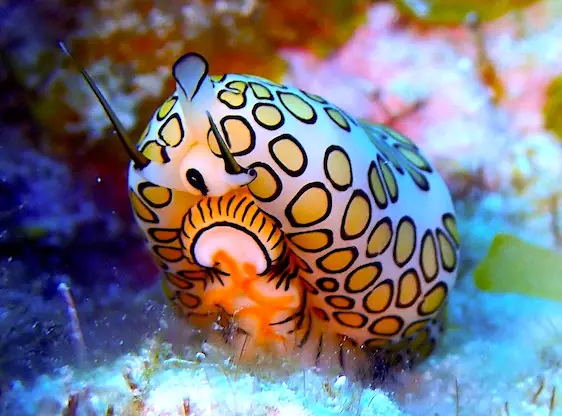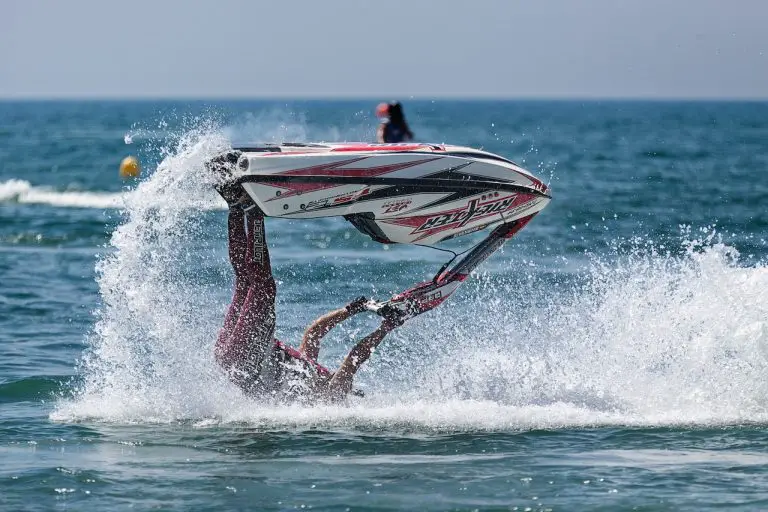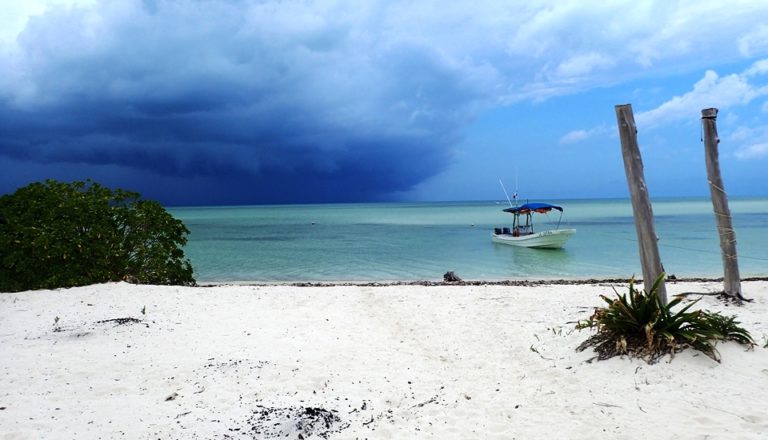Sea Slugs Of Cozumel: Neat Nudis, Excellent Elysias
The first time I spotted my own lettuce sea slug (Elysia crispata) while diving in Cozumel, I felt like I’d found a unicorn. Once I found that one, I started seeing them more and more and more.
Cozumel is not always known for major macro, but there are way more sea slugs and nudibranch species than I ever realized in my early days diving here.
So if you love the small stuff like I do, you’ll be happy to see that Cozumel diving has more macro marine life than many realize.
Here’s a guide to the most common sea slugs and nudibranchs you’ll likely encounter while SCUBA diving in Cozumel.
Cozumel’s Macro Marine Life
Capturing macro images of sea slugs in Cozumel is like a treasure hunt – seeking out hidden gems among coral reefs and rocky crevices.
With patience and a good macro lens on your underwater camera, divers can have an incredible time exploring and catching sight of some truly spectacular macro critters.
We’ve already covered some excellent local macro subjects like Cozumel’s mini marine shrimp species, good ways to up your UW macro game in this post, and even where to look for the tiniest macro marine life of all – various types of marine eggs you’re likely to find in Cozumel, in this post right here.
Whether you’re just starting out or already an experienced photographer, Cozumel offers plenty of opportunities for capturing stunning close-up shots of its diverse macro marine life.
Sea Slugs and Nudis Make Excellent Macro Photo Images
But of all of them, sea slugs and nudibranchs (a.k.a. “nudis”) are especially fun to find, and make awesome, Instagram-worthy shareable images.
For anyone looking for something truly special when diving in Cozumel’s waters, keep your diving eyes peeled underwater to find some sea slugs during your dive trip.
**All photos in this post were taken by yours truly with the easy-to-use but excellent TG-6 camera by Olympus. See the end of the post for a link to our full review and recommendations for a complete beginners’ UW photography setup. Perfect if you’re just starting out.
Painted Elyias – Easy to Find in Cozumel (relatively…)
Painted elysias (Thuridilla picta) are likely the most numerous type of sea slug in Cozumel, but they’re also some of the smallest.

Luckily, their bright colors and fairly predictable behaviors make them easy to find, once you get the hang of it.
Painted elysia are known as sap-sucking slugs, and usually hang out right where they eat – in bright green puffs of grassy looking patches.
Not only do they look incredible against that green background with their vibrant orange, blue, and yellow coloring, but they’re the kind of subject that doesn’t move much, so beginner photogs with decent reading vision can get some great practice.
You might even stumble on a whole family of them!

Elysia Crispata
Elysia crispata, commonly known as lettuce sea slugs (or in Mexico, Lechuga slugs) are my favorite macro subject in Cozumel.

The lettuce sea slugs come in different shapes and sizes, from tiny juveniles, to long skinny adolescents, to much bigger mature lechugas with lots of ruffly parapodia (outgrowths along body) and incredible colors, up close.
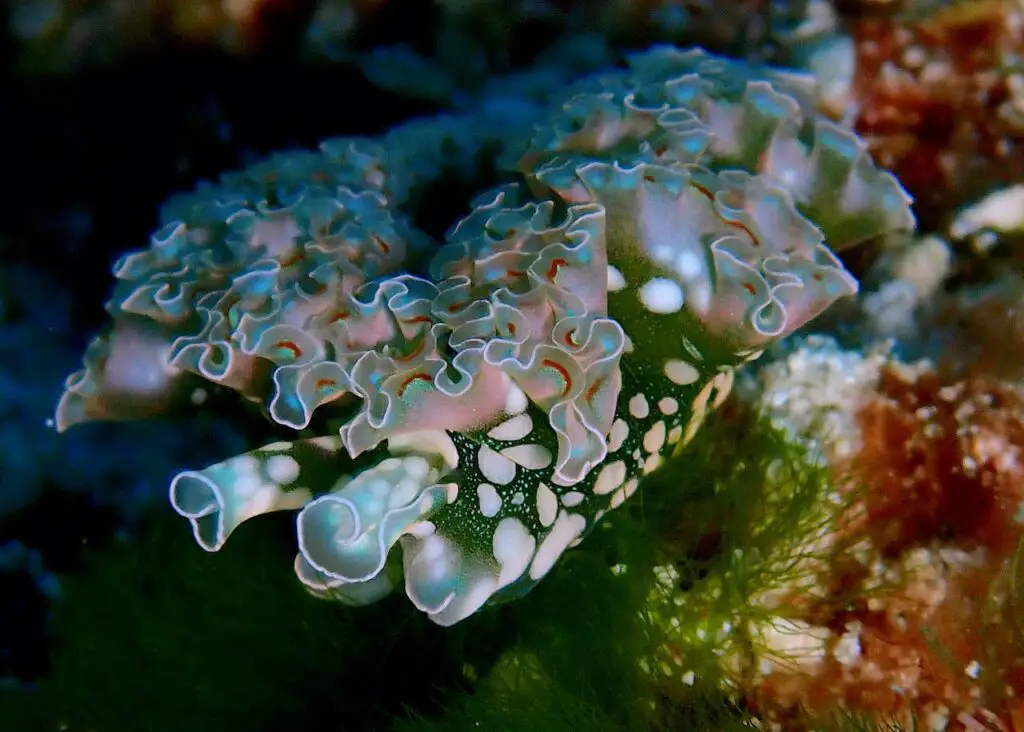
Ornate Elysia
The ornate elysia (Elysia ornata) with its interesting colors and black-dotted pattern, is a sight to behold – if you can ever find one!
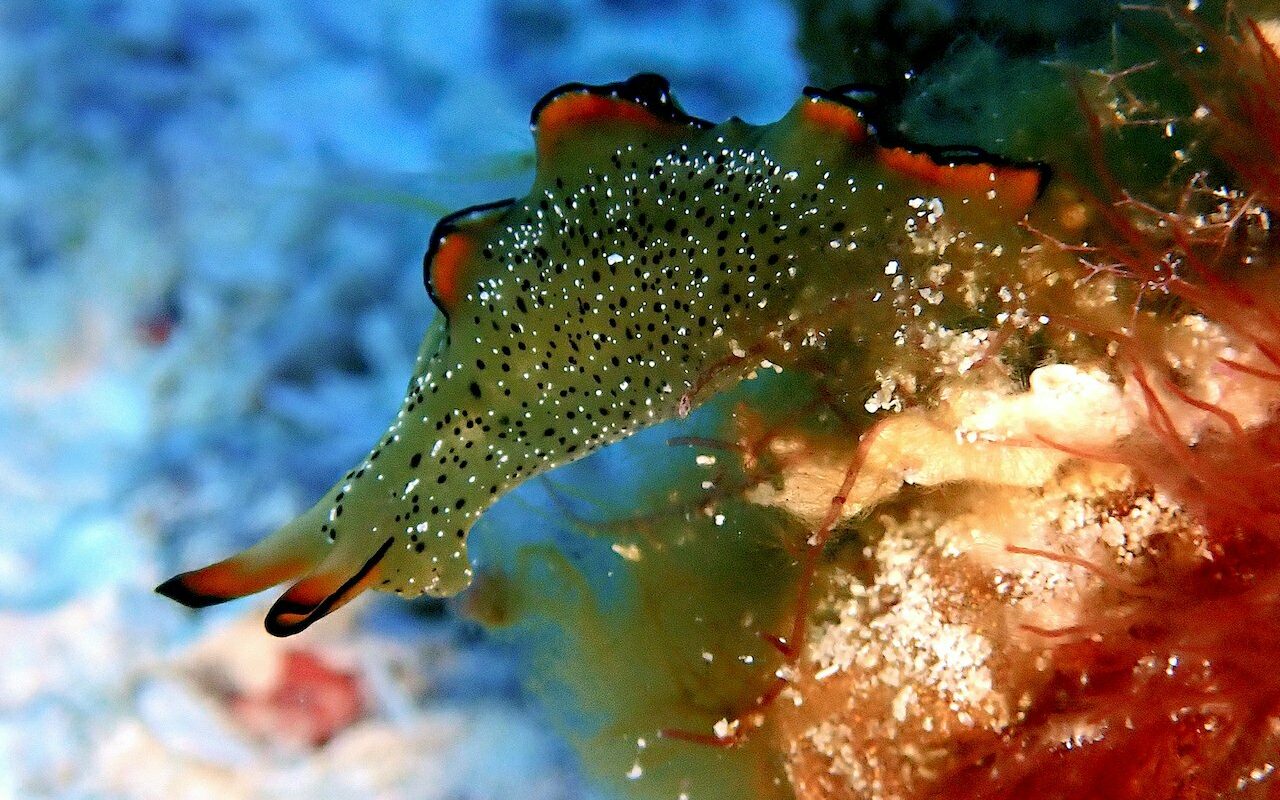
I’ve mostly seen these cuties out on the sandy ocean floor, which never makes for the best photo image, IMO.
Nevertheless, it’s another treasure to hunt for, and their beauty stands out.
Lined Elysia
Have you ever heard of a lined elysia (Elysia pratensis)?
This particular sea slug is quite hard to spot when diving in Cozumel, but I have seen them a handful of times.
Typically a bit larger than a painted elysia, but not as chunky as our biggest lettuce slugs, the lined elysia has subtle stripes, and blends into its surroundings a little too well for us UW photography nerds.

But if you can spot its distinctive colors, this species of Caribbean sea slug stands out from other members of its family.
There are other types of elysias in the Coz marine park, but from my experience, the four types above are the most typical sea slugs to encounter while diving in Cozumel.
Yes, There Are Nudibranchs in Cozumel
As cool as it is to find an elysia sea slug in Cozumel, it’s even better when you stumble upon one of our precious nudibranchs.
Nudibranchs are also sea slugs, but have unique morphology that makes them a darling of divers and underwater macro fiends all over the world.
It’s just that in this part of the world, they’re not as abundant and they’re usually really really especially small.
Not easy to find, but the more you look the more you’ll see!
Purple-Crowned Sea Goddess Nudibranch Is A Rare Treat
The Purple-Crowned Sea Goddess nudibranch (Felimare kempfi) is perhaps the most eye-catching of the nudibranchs I’ve found while diving in Cozumel, at least so far.
This nudibranch looks more like one you’d see in the Pacific, with its classic nudi shape, vibrant stripes and spots, and a concentrated plume of exposed gills – in fact, the word nudibranch means exposed gills (as in ‘branchial’ features).
It’s an incredible sight to behold for any avid scuba diver or underwater photographer.

The Sea Goddess Nudibranch is a small species – usually no longer than an inch in length – but it packs quite a punch with its bright orange coloration and unique patterning.
If you’re lucky enough to spot this dazzling sea goddess during your Cozumel diving trip, take full advantage of the opportunity – it definitely doesn’t happen every day.
Flabellina Nudibranchs In Caribbean
Another classification of nudibranch we’ve seen with some regularity here is the flabellina.
Flabellina nudibranchs are found in tropical seas around the world, including those near Mexico’s Yucatan Peninsula.
These eye-catching nudis can come in various colors and patterns.
The two I’ve seen the most over the years are the Purplering flabellina (Flabellina marcusorum) and – I think – the Dushia flabellina (Flabellina dusha).
Purplering Flabellina in Cozumel

Dushia Flabellina in Cozumel
I’ve seen a few of these dushia flabellina nudis in Cozumel, and they come in different colors.

OR they might be slightly different species or types – I’m still studying my favorite Caribbean marine life ID books!
Tufted Tritoniopsis Nudibranch
This one is special.
I have now found a few of these guys over all my years diving here, but I’ve never seen too many other photos of the Tufted Tritoniopsis (Tritoniopsis frydis) on local Cozumel diving social media feeds.

If you’re a nudibranch fan hoping for something truly unique and exciting while diving Cozumel, the tufted tritoniopsis nudibranch is a good one to keep an eye out for – but trust me, they’re not that easy to spot.
First off, they’re not common in this part of the world.
Second, unlike their brightly colored cousins, the ones I’ve seen here could be mistaken for a tiny blob of cotton or simply a small white or beige encrusting sponge, or a bit of coral bleaching, even.
As you get close, though, you’ll see its symmetry and certain tell-tale bits of anatomy, like their rhinophores, and the branching cerata appendages that ring the slug’s body.
These critters also don’t seem to move. Like, at all.
So again, you likely won’t notice them. Now that I’ve found a few, I kind of know what to look for – or at least to give that blob of fuzz a second or third look before moving along.
Frequently Asked Questions
What Other Marine Life Can Be Found In Cozumel?
Cozumel is a diving hot-spot, and one of the most popular places to SCUBA dive in the Caribbean. From our majestic eagle rays, to a variety of sea turtles, tons of tropical fish, sharks, and yes, lots and lots of macro life.
Check out some of our other posts on the best animals to encounter – and photograph – in our Cozumel Diving category.
Or start with our most popular posts:
Sharks of Cozumel – What Types Can you See
Full Guide to Cozumel’s Sea Turtle Populations
Cozumel’s Endemic Splendid Toadfish – our most iconic dive buddy in the marine park
Sea slugs are meanwhile one of the lesser-known inhabitants of this Caribbean destination – but they’re certainly worth checking out!
The diversity of species in Cozumel makes it an ideal place for any ocean lover looking to explore something new. With such an abundance of wildlife, there will always be something exciting to see on your next SCUBA adventure.
What Is The Best Time Of Year To See Sea Slugs In Cozumel?
The answer may surprise you – any time is the right time.
The waters around Cozumel offer an ideal diving environment for a wide variety of species, and our typical encounters can happen at any time throughout the entire year.
The one species in Cozumel that has more of a season is the Spotted Eagle Ray.
While we see eagle rays while diving during the summer months from time to time, they really hang out and visit divers the most during the months of December through March.
Conclusion
Sea slugs are a remarkable part of marine life in Cozumel. While they may not be as well-known or talked about as other sea creatures, more and more macro fanatics are finding them, and taking incredible photos.
Their beauty and uniqueness make them worth seeking out, provided you’ve got a good macro lens and a good eye.
From bright colors and intricate markings to interesting behaviors, spending time observing these amazing tiny macro creatures is sure to provide lifelong memories for those lucky enough to witness it firsthand.
- Easy to use
- Easy to pack
- Easy on the wallet
- Durable, waterproof, dustproof



